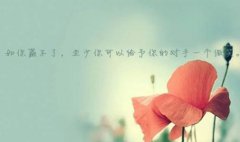高中英语新课标
新课标人教版课件系列《高中英语》选修(模块) 选修(模块)6-2.2 Unit 2 Poem The First Period: Warming up and Pre-readingThe teaching plan consists of five parts: I. Analysis of the teaching material II. Analysis of the teaching methods III. Teaching important and difficult points, IV. Teaching aids V. Teaching procedures and ways I. Analysis of the teaching material1)The introduction This unit introduces the students to several simple forms of poems. It takes a look at some poetic devices like rhythm, rhyme, repetition ,sound patterns and imagery. It includes poems forms that English speakers have adopted from other countries. The poem forms in this unit include ones that students can use as models to create their own poems. Reading and writing poems can improve the students’ ability of creativity ,observation and imagination. 2) Knowledge goal: Key words and phrases: recite, aspect, rhyme, rhythm, diamond, endless, transform, take it easy ,run out of 3) Ability goals: ①Enable the students to know more about the poems, including the reason why people write poems and the simple types of poems. ②Improve the students’ ability of creativity, observation and imagination 4) Moral goal: By learning this part, the students can not only understand some forms of poems, but also learn how to improve the ability of observation and imagination, to enjoy the beauty of poetry. 5) Teaching aims ①To get students to practice in an important reading skill: scanning a text, that is, looking through a text quickly to find specific information. ②To arouse the students’ interest in poems. II. Analysis of the teaching methods1). The new curriculum advocates the cooperative learning, taskbased learning and communicative learning. Therefore, I’ll create as many chances as possible to get my students to participate in various activities. The class will be divided into several groups of 5 or 6 students, between which competitions will be held. They’ll get marks if they complete certain task. Before the class is over, we'll see how many marks each group gets and which is the champion. 2). Apply an understanding of learning styles to teaching. There are three kinds of learning styles, namely visual, auditory and kinesthetic. A visual learner likes to learn by reading, seeing or watching with his own eyes; an auditory one likes to learn by listening, by having things explained; a kinesthetic one likes to learn by doing and touching or practicing. Therefore, I’ll apply multi-functional teaching equipment to cater for different characteristics of students’ learning habits. III. Teaching important and difficult points 1) Talk about the kinds of poems and get to know some poets 2) Talk about rhyme and rhythm 3) Learn to use a reading strategy: Scanning IV. Teaching aids A computer and a projector V.Teaching procedures and ways Group competition: Let’s divide the class into several groups .Each group will get mark
高中英语新课标
s by completing certain task. Before the class is over, we'll see how many marks each group gets and each member of the champion group will get a present from your teacher!. Group competitionTask 1 Task 2 Task 3 Task 4 Task 5 Group 1 Group 2 Group 3 Group 4 Group 5 Group 6 Group 7 Group 8 Task 1 Discuss your travel to the pastIn Unit 3 of book 5 we learned that Li Qiang and Wang Ping traveled to the future and saw amazing things. Now imagine you also had a chance to take a time travel, but you were to travel to the past rather than to the future. Your tasks were to interview your favorite poets and find out about their poems. You could visit either Chinese or foreign poets. You could also travel to your childhood to go over your first poetry you learned. Discuss with your classmates: Which time period you would travel to, which poets you would interview. Give your reasons. You can use the following sentence patterns:I wish I could… If I could travel to the past, I would… I suggest that we should… My suggestion is that we should… I insist that… I would rather… My advice is that… ( by doing this activity, students can recall poems they learned before as well as revise the grammar items they learned in Unit 1) Warming up Task 2 Talk about the kinds of poems as well as introduce some famous poets. Group competition: say the name of a poem or a poet and your group can get 1 mark Saying Good-bye to Cambridge AgainVery quietly I take my leave As quietly as I came here; Quietly I wave good-bye To the rosy clouds in the western sky. 徐志摩(1896-1931),浙江海宁人。1920年曾留学英国。1923年加入新月 社,成为新月社诗派的代表诗人。“志摩是蝴蝶,而不是蜜蜂,女人好处就 得不着,女人的坏处就使他牺牲了。”——冰心再别康桥徐志摩轻轻的我走了, 正如我轻轻的来; 我轻轻的招手, 作别西天的云彩。 The furthest distance in the worldTagoreThe furthest distance in the world Is not between life and death But when I stand in front of you Yet you don't know that I love you世界上最遥远的距离 不是生与死 而是 我就站在你面前 你却不知道我爱你 泰戈尔罗宾德拉纳特·泰戈尔 (1861年5月7日— 1941年8月7日)是一 位印度诗人、哲学家 和印度民族主义者, 1913年他获得诺贝尔 文学奖,是第一位获 得诺贝尔文学奖的亚 洲人 Shakespeare (1564—1616 )Shelley (1792—1822 ) The Tang PoemsIn the Quiet Night A bed, I see a silver light, I wonder if it's frost aground. Looking up, I find the moon bright; Bowing, in homesickness I'm drowned. 静夜思 李白床前明月光,疑是地上霜。 床前明月光,疑是地上霜。 抬头望明月,低头思故乡。 抬头望明月,低头思故乡。 新课标人教版课件系列《高中英语》选修6 The Willow The slender tree is dressed in emer …… 此处隐藏:8457字,全部文档内容请下载后查看。喜欢就下载吧 ……





